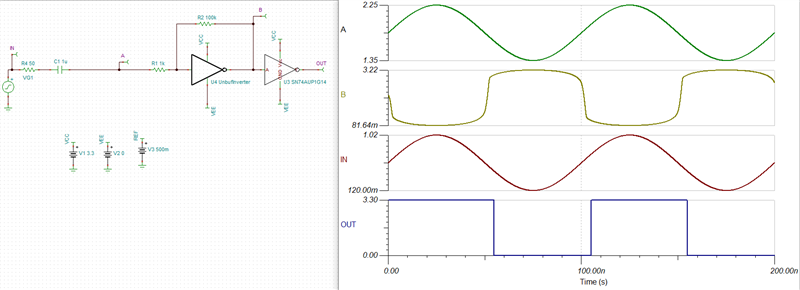Other Parts Discussed in Thread: SN74AHC1GU04, SN74LVC1GX04
Hi to all users.
I need to design 3.3V FPGA board with clock from TCXO.
TXCO would give me sine wave or clipped sine wave.
TCXO I am actually using is 32MHz (I need 48MHz but it should work up to 100MHz), outputs levels of clipped sine wave are 0.12 to 1.04V.
I would like to use low pin count inverter (such SN74AUP1G14DBVR in SOT-3 package).
Unfortunately there is no availability of TCXO from my supplier, so I am not sure which oscillator I'm going to use (just powered 3-3.3 Volt) and I have no way to create small PCBs for test.
Is there a reference circuit I can use as general purpose to convert sine (clipped) to square wave?
Thanks.


